Extraordinary Nikko Day Trip from Tokyo: One Day Itinerary Ideas
Seeing Shinkyo Bridge on a day trip to Nikko from Tokyo had been on my list of places to visit in Japan for so long, I stood frozen in disbelief that I’d finally made it. To the sounds of a turquoise river loudly flowing beneath, I involuntarily let out a gasp as I gradually turned the corner to see its vermilion hue set against a backdrop of stunning lush greenery. There it was!
Are you wondering if a Nikko from Tokyo day trip is worth it? Let me tell you, I had visited a different area of Nikko once before and there was a time I thought my day to return would never come.
But in case it did, I had carefully researched my second Tokyo to Nikko day trip down to the smallest detail. Even having done this, my expectations were easily exceeded!

Nikko is so breathtakingly beautiful, it becomes quite apparent why it’s one of the popular places to visit in Japan. It’s also obvious why this spot was chosen as the final resting place for Tokugawa Ieyasu, one of the great unifiers of Japan and founder of the powerful shogunate that went on to rule the country for over 200 years.
Besides the jaw-dropping UNESCO shrines and temples dedicated to his honour, Nikko is perfect for soaking in some Japanese culture in the form of onsen (hot spring resorts), cultural themed parks, ropeways and even museums set in leafy surrounds.
From ways to do a Nikko day trip from Tokyo using different transport passes, suggestions for things to do you likely haven’t seen anywhere else, and tips for planning your day trip itinerary, read on for more!
This post contains affiliate links. I may earn a small commission if you click through and make a purchase.
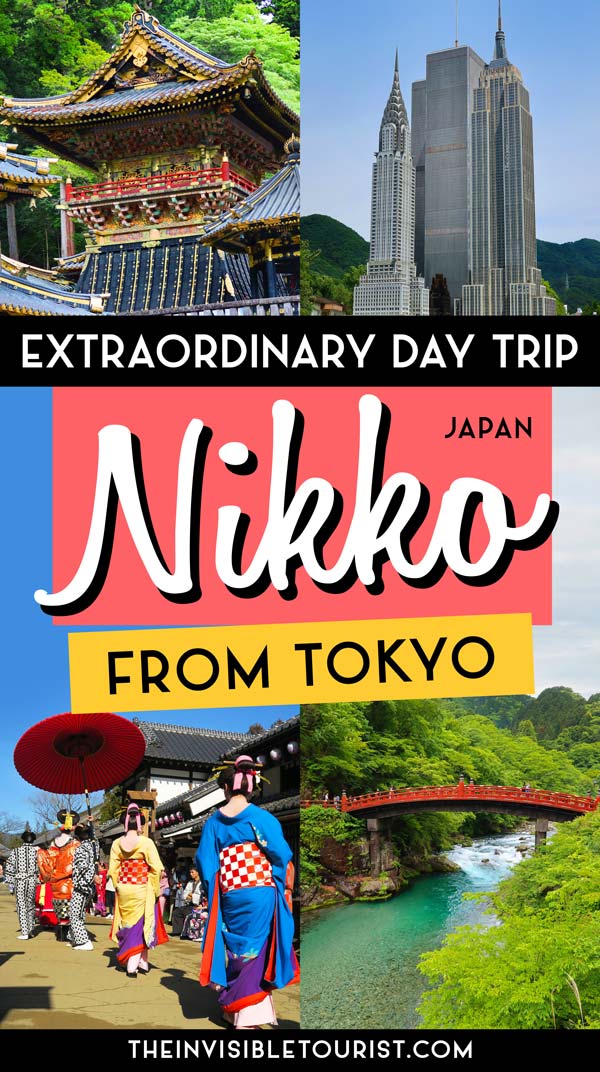
TIP: This guide to a one day Nikko itinerary forms part of my guide to day trips from Tokyo, and features in my Japan honeymoon itinerary, so take a look for more inspiration once you’re done here.
Day trip to Nikko itinerary: Lesser-known things to do
As I mentioned earlier, the attractions in Nikko are quite spread out, often needing buses or trains to get between them.
The UNESCO Shrines of Nikko are somewhat located in the centre, with attractions along the Daiyagawa River to their east and natural sites around Lake Chuzenji to the west.
Here is my list of things to do in Nikko to add to your day trip itinerary. I’ll start with the lesser-known before moving onto the popular spots. I’d recommend selecting 2 of these for the day (3 at the most), and I’ve included the nearest transport options for reaching them. Let’s take a look!
Tobu World Square
Nearest transport stop: Tobu World Square Station on the Tobu Nikko Line
Have you ever wanted to visit your favourite global landmarks in miniature form? It’s possible at Tobu World Square! 140,000 tiny figurines help bring 102 famous attractions and UNESCO World Heritage Sites to life in this outdoor theme park.
The attention to detail absolutely blew me away, and I thoroughly enjoyed comparing landmarks I’ve seen throughout my travels to the ones here.
TIP: Allow at least 1.5 – 2 hours here to appreciate the small details and receive discounted entry when presenting your Nikko Pass.
NOTE: This is one of the lesser-known things to do in Nikko with foreign visitors, so I hope you enjoy it as much as I did! Read my full guide for what to expect visiting Tobu World Square here.

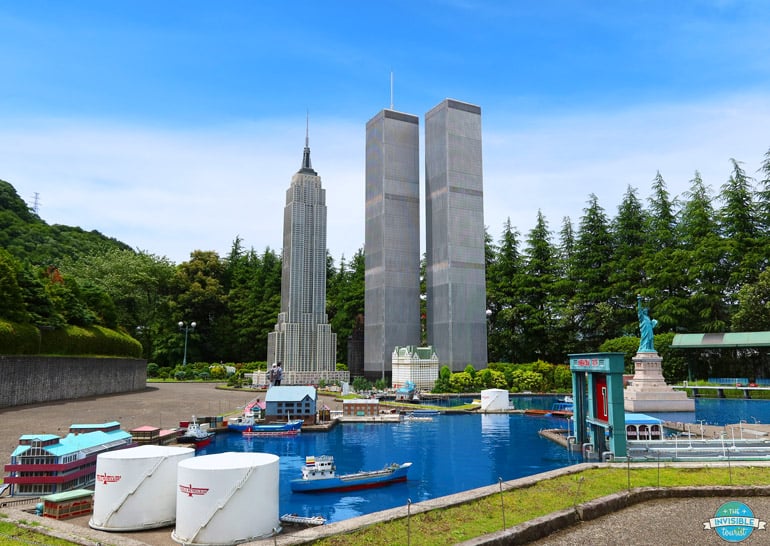
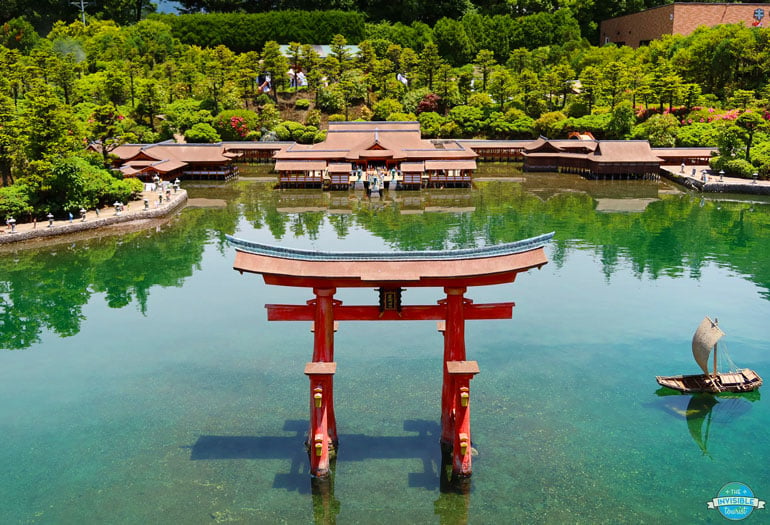
Edo Wonderland Nikko Edomura
Nearest transport stop: Kinugawa Onsen Station on the Tobu Nikko Line, then 10mins on a free shuttle bus
Wanting to learn more about what life was like in Japan when Edo was its capital between 1603 – 1867? Edo Wonderland is for you!
Step back in time for a day by enjoying different cultural performances and participating in experiences such as ninja tricks, samurai training, learning archery, Daruma doll making and more (pssst, more about Daruma dolls and other souvenirs from Japan here!)
While snacking on local street foods throughout the day in the park, finish up by watching the super impressive Oiran Procession, with incredible kimono and accompanying costumes on display.
TIP: Allow 2-3 hours here, buy advance Edo Wonderland tickets here or show your Nikko Pass for discounted entry. I suggest checking their timetable to catch the performances you wish to see.
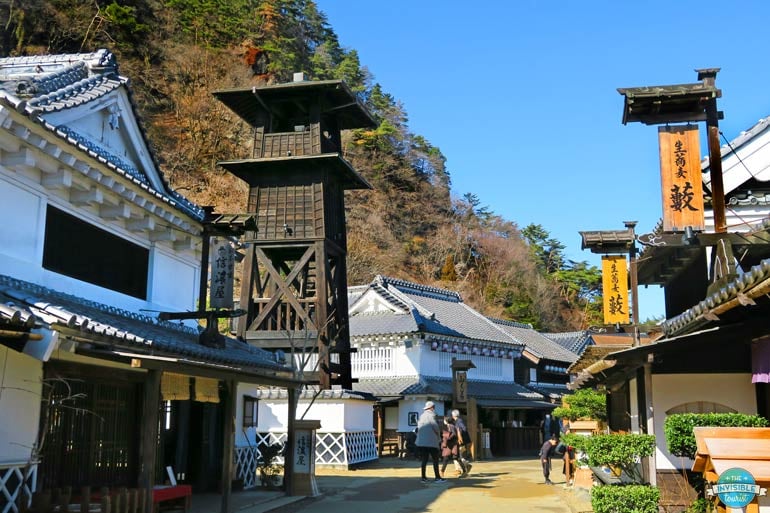
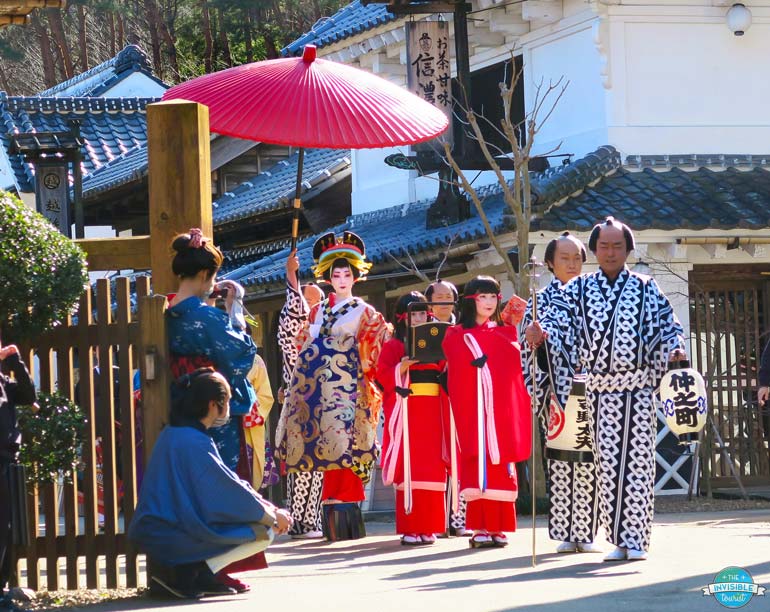

Shinkyo Bridge
Nearest transport stop: Tobu Nikko Station on the Tobu Nikko Line or JR Nikko Station on the JR Nikko Line, then 15mins walk
Translating to “sacred bridge,” Shinkyo Bridge marks the entrance to nearby Nikko Futarasan Shrine, which was founded in 782 AD and is one of Japan’s Important Cultural Properties. Considered one of the top 3 bridges in Japan, it was built in 1636 and has become a popular icon of Nikko that you can’t miss on the way to Tōshōgū Shrine.
A UNESCO World Heritage site itself, crossing the 28-metre length bridge over the Daiyagawa River is not possible from the roadside as it is blocked off. However for a small fee you can cross to its centre when visiting the accompanying shrine. It’s a must-see on your day trip to Nikko.
As a town, legend has it that Nikko was built around Shinkyo Bridge and its neighbouring sacred shrines. It’s most popular to visit during autumn when surrounded by red and orange foliage. But hey, it still looked amazing during my summer visit, don’t you think?
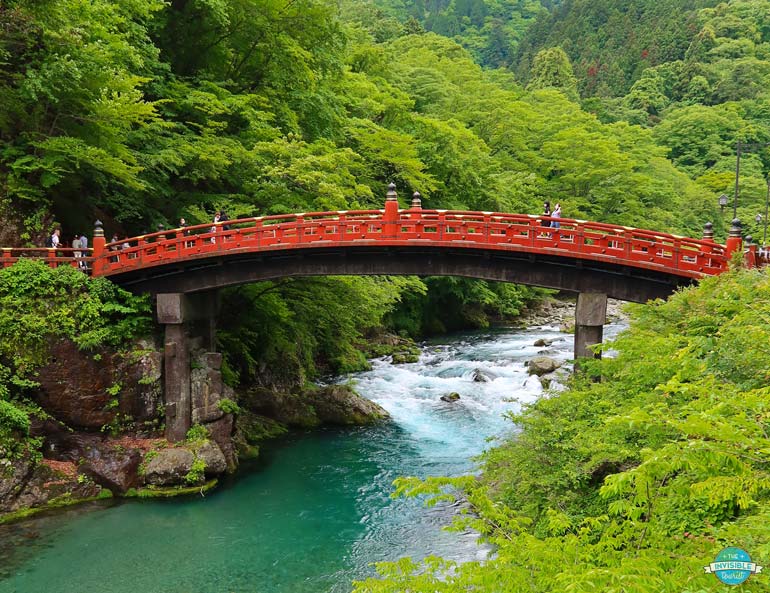


Nikko Tōshōgū Shrine
Nearest transport stop: Tobu Nikko Station on the Tobu Nikko Line or JR Nikko Station on the JR Nikko Line, then 15mins walk from Shinkyo Bridge
Now for the most popular of all Nikko attractions – Tōshōgū Shrine. Located within the dense Nikko National Park, the shrine grounds are made up of 29 different buildings, many more than I first realised!
Along with others in the area, these buildings are part of the UNESCO Shrines and Temples of Nikko.
TIP: I recommend hiring the English audio guide for 500 JPY so you can learn about each structure in further detail. This is a laminated map with images and some kind of magic pen that prompts the audio when tapping on each number!

Did you know my visit to Nikko Toshogu Shrine was actually inspired by a scale model in Takayama? Located in Sakurayama Nikkokan, it took 33 carpenters and painters 15 years to complete the 28 buildings of Toshogu Shrine in 1:10 scale. Mind-blowing stuff! You can see more on my Instagram or in my Takayama itinerary.
The unmissable sights in Nikko Toshogu Shrine are:
- Five Storey Pagoda of Toshogu Shrine – Located at the left of the shrine’s main entrance. The intricate paintings, vibrant colours and detail are incredible.
- Sanjinko (Three Sacred Storehouses) – Modelled after the storehouses of Todai-ji in Nara, these buildings contain costumes and accessories used in the old Thousand Warrior Procession. Can you spot the two elephants that were carved by someone who had not seen them in person?
- Three Wise Monkeys – The 8 beautifully preserved wooden panels feature carvings of a baby monkey in the various stages of its life cycle. The Buddhist saying “see no evil, hear no evil, say no evil” is represented in the carvings, meaning this is the way to live a pure soul and long life from a young age.



- Yomeimon Gate – Adorned with white carvings of fierce dragons amongst black and gold details, this gate was once reserved only for passage of high-ranking people. Would you believe each section is carved from its own single piece of wood?
- Nemuri Neko (Sleeping Cat Carving) – Protects the entrance to the grave of Tokugawa Ieyasu. Although, the cat does have a carved sparrow behind it, which to some signifies peace… Or is the cat waiting to catch it? It’s up to your interpretation.
- Sakashitamon Gate – First gate to the inner shrine, once only open to the shogun and his family to pray. It’s decorated with wooden crane carvings, which were thought to live for a thousand years in Japanese mythology.
- Stone Steps and Balustrades – 207 steps lead the way to the inner shrine, each carved from a single block of stone; only the best for the shogun. In typical Japanese fashion, there is a drink vending machine at the top of the stairs to help you rehydrate after the climb!



- Inner Shrine & Worship Hall – Once reserved only for the Tokugawa Shogun to pray. The exterior is covered in copper plates that have been painted black.
- Inukimon Gate – An exceptional piece of Japanese craftsmanship from the Edo Period, this bronze gate built in 1650 was cast in one single piece. The doors were added separately.
- Inner Shrine Pagoda – Lord Tokugawa Ieyasu is buried beneath this 5 metre-tall gold, silver and copper pagoda on stone. His grave has never been opened.
- Wish Granting Tree – Over 400 years old, the huge cedar tree was already here when Toshogu Shrine was built.
- Okariden (Temporary Shrine) – Constructed in 1639, the building was meant to temporarily house the shrine deities when the main shrine underwent renovations. However as restorations happened so frequently throughout the centuries, Okariden became permanent.


Nikkosan Rinno-ji Temple
Nearest transport stop: Tobu Nikko Station on the Tobu Nikko Line or JR Nikko Station on the JR Nikko Line, 25 minute walk from either
Founded in 766 AD by the monk who introduced Buddhism to the area, Rinno-ji is the most important temple of its kind in Nikko.
Dedicated to the three mountain gods of Nikko, the temple houses three gilded statues measuring a whopping 7.5 metres in height each. Don’t miss the lovely Japanese garden behind the Treasure House!
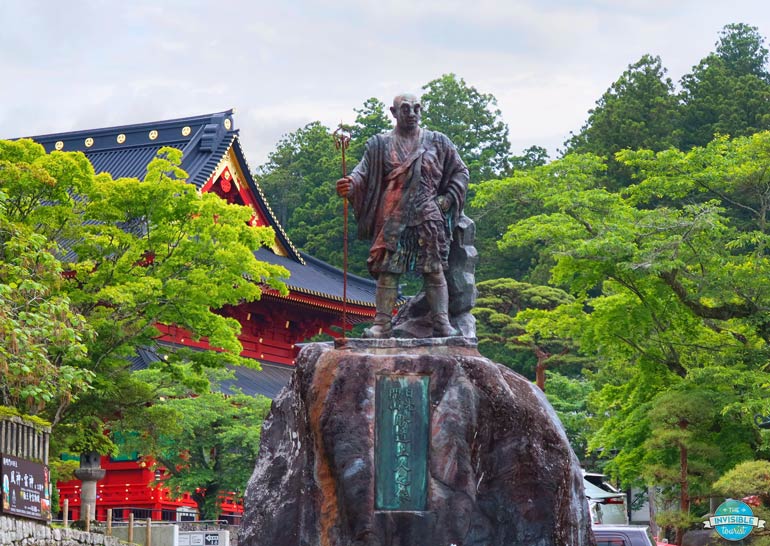
More places for your Nikko one day itinerary
As I am yet to do a third day trip to Nikko to explore the natural wonders located on its western side, the following are ideas to consider adding to your Nikko day trip itinerary.
TIP: These locations are quite some distance from each other, so you may wish to look into using buses to get between them. However if you choose the bus to day tour Nikko from Tokyo, some of these will be covered!
- Kegon Falls – Cascading down a 100-metre high cliffside, Kegon Falls (Kegonnotaki) is the most famous of waterfalls in the Nikko area.
- Kinugawa Onsen – Hot spring resort town to soak and relax the local way.
- Lake Chuzenji – Its banks hugging the base of Nikko’s sacred volcano, Mt Nantai, Lake Chuzenji is about 20,000 years old and surrounded by stunning red foliage during the autumn months.
- Chuzenji Temple – Built into the elevated mountainside and overlooking the lake below, the interior ceiling of Chuzenji Temple is painted with dragons and flowers from the area.
- Kanmangafuchi Abyss – Lined with stone Jizo wearing red bibs, it’s believed the number of statues changes each time you count them!
- Tamozawa Imperial Villa – Built in 1899 in traditional Japanese style with Western touches, this 106-room villa is the former summer retreat of Japan’s Imperial Family.
NOTE: There is no Nikko National Park entrance fee.
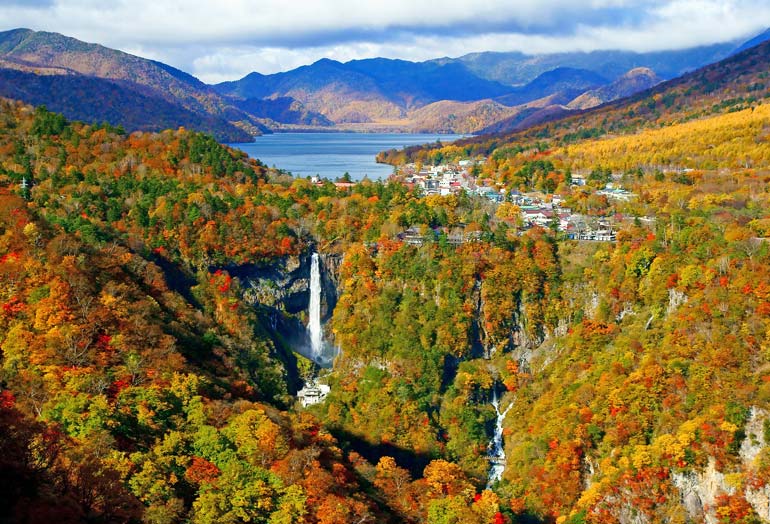
Best place to stay in Tokyo for a Nikko day trip
Having visited Japan multiple times over the past decade, I’ve stayed in many hotels throughout the greater Tokyo area and can recommend that Asakusa is one of the easiest places to stay the night before spending one day in Nikko.
You’re going to want to catch one of the earliest trains around 7:30am to reach Nikko by 9:30am to make the most of your visit and Asakusa has a direct service.
If you prefer to stay in other areas of Tokyo such as Shibuya or Shinjuku, allow around an extra 30mins to arrive at Tobu Asakusa Station in order not to miss the express train to Nikko.
TIP: For my recommended Asakusa hotel, click here. For all my hotel recommendations I’ve personally enjoyed throughout Japan’s capital, check my guide to where to stay in Tokyo for honest advice for all kinds of travellers.

How to get to Nikko from Tokyo
How far is Nikko from Tokyo? There are 3 ways to get to Nikko from Tokyo, each takes around 2 – 2.5 hours one-way. Discount passes are available for tourists, which I’ll compare down the page to help you decide which is right for you.
Comparison of different transport from Tokyo to Nikko
1. Tobu Rail from Asakusa Station
Tobu Rail is a private rail company that is not covered by the Tokyo Subway Pass (for the Metro) or Japan Rail Pass (for JR lines).
On the bright side, Tobu offers a Nikko Pass for tourists to use on its Tobu Nikko Line and it’s a great way to save both time and money – rare in Japan!
Personally this is my favourite Tokyo to Nikko train for its efficiency. The Tobu Nikko Pass has two options:
- World Heritage Area Pass – Valid for 1-2 consecutive days
cost 2,120 JPY year-round - All Area Pass – Valid for 1-4 consecutive days
cost 1 December – 19 April = 4,160 JPY / 20 April – 30 November = 4,760 JPY
If using the Nikko Pass from Tokyo:
- Tobu Asakusa Station is not to be confused with Asakusa Metro Station
- Use the pass to reserve seats in person at the Tobu Tourist Information Centre
- Present the pass for discounted entry into many Nikko attractions, such as Tobu World Square, Edo Wonderland, Kinugawa Onsen Ropeway, Akechidaira Ropeway and more
- Can be used on Tobu buses to get around the Nikko World Heritage area
- Present in retail stores with the Nikko Pass logo for a 10% discount on purchases over 1,000 JPY
- Direction from Tokyo is Tobu-Nikko Station.
TIP: Before purchasing the All Area Pass or World Heritage Pass, use my itinerary suggestions down the page to determine which will best suit your day trip to Nikko. The passes cover different areas of Nikko and the attractions are quite spread out.
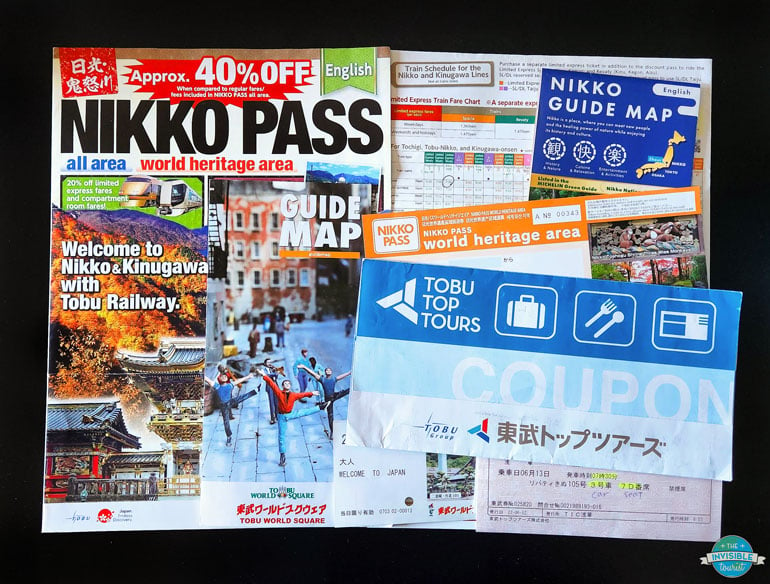
2. Japan Rail (JR) from Tokyo Station or Ueno Station
If travelling with the Japan Rail Pass for your Nikko day trip, you can use different JR lines that will cover the return journey from Tokyo to Nikko.
- Purchase your Japan Rail Pass in advance here
- Catch the JR Tohoku shinkansen (bullet train) from either Tokyo Station or Ueno Station
- It’s a good idea to reserve seats in advance during busy periods, but not necessary otherwise
- On the JR Tohoku shinkansen head to Utsunomiya Station, then hop off there and switch to the JR Nikko line to reach JR Nikko Station.
3. Bus trip and guided tour from Shinjuku
- Guided group tour on a coach. Includes Tōshōgū Shrine, Kegon Falls, lunch and your choice of visiting Lake Chuzenji or relaxing in a nearby onsen (hot spring). Book your Nikko bus trip in advance here as spots are limited.
- One thing I noticed during my time in Nikko was that these bus tours all leave Nikko around 3pm in order to make it back to Tokyo by 5pm. There can be a lot of traffic getting out of Nikko, so this option may take longer than you planned.
Tips for planning your day trip to Nikko itinerary
- Make sure to have either your physical Tobu Nikko Pass or Japan Rail Pass the day before your trip at the latest. It’s likely you won’t have time to queue up the morning of your trip to get tickets, so allow time a day or so in advance.
- Nikko Pass users: When exchanging your pre-paid Nikko Pass voucher, ask to be seated on the left side as the journey is a little more scenic, especially when arriving into the Nikko area. Snow-capped mountains await you in cooler months.
- Both the JR Tohoku shinkansen and Tobu trains have tray tables, electronics chargers and the chairs slightly recline. Tobu has free wifi, just enter your email address.
- Nikko Pass & JR Pass users: Decide beforehand where to start your Nikko day trip in order to have your tickets issued for the closest train station to your first attraction.
- I can recommend visiting either Edo Wonderland or Tobu World Square first thing in the morning. By the time the afternoon rolls around at Toshogu Shrine, the crowds of tourists and school children will be beginning to wrap up, making it the perfect second or third stop of the day.
- Bring snacks. Food stops are scarce once you’re away from the main train stations. If visiting Tobu World Square first, I loved the little ramen and gyoza shop for lunch just opposite Tobu World Square Station, then head to the shrines in the afternoon.
- During the warmer months at least, there are a lot of little flying midge-like bugs in Nikko National Park. You may wish to wear insect repellent. Even wearing a mask, one managed to fly up my nose!
- At Nikko Toshogu Shrine, don’t forget to look UP. Some of the most beautiful paintings can be found on inner ceilings and most people miss them.

Concluding this guide for a Tokyo to Nikko day trip
This wrap up my guide for a day trip to Nikko Japan! As you can see, there is so much more to Nikko than Shinkyo Bridge and the UNESCO temples and shrines. You’re able to learn about life during the Edo Period in fun ways, see your favourite world landmarks in miniature, admire natural scenery complete with lakes and a volcano, and even indulge by soaking in onsen!
If it isn’t obvious by now, I believe a day trip to Nikko from Tokyo is absolutely worth it. Which of these attractions will you be adding to your day trip from Tokyo to Nikko? Will you take a Nikko tour from Tokyo by bus, or do it yourself with some different ideas I’ve mentioned? Let me know in the comments below.
While you’re here, find detailed 2 week and 3 week Japan itineraries, city guides on my Japan travel blog, find out what to pack for Japan, learn some basic phrases in Japanese for tourists with my free cheat sheet, how to plan a trip to Japan and so much more!
If you found this guide to Nikko 1 day itinerary helpful, please share it with someone you’re hoping to visit Japan with and join me on Facebook, Pinterest, YouTube, Instagram and TikTok for more travel inspiration!
Until next time,

Like it? Pin it! 📌
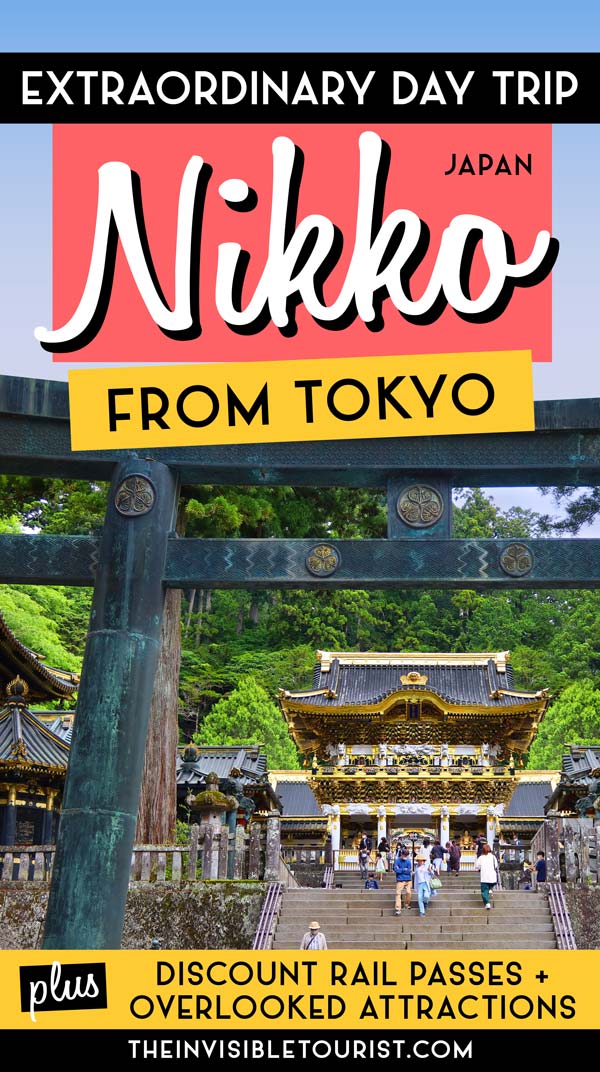
This guide to a day trip to Nikko from Tokyo contains affiliate links, at no extra cost to you. I may earn a small commission if you decide to make a purchase and if you do, thanks for your support! This helps with the costs of running my blog so I can keep my content free for you. As always, I only recommend a product or service that I genuinely love and use myself!

Hey Alyse,
your guide is so helpful, thank you so much! We are planning to see shinkyo bridge, all 3 temple/shrine buildings, the abyss, kego falls and ryuzu falls. If I understand correctly, we would need to buy the all area pass instead of the heritage pass right? and do you think it’s possible to see all this in one day?
Hi Tina!
Yes, for your plans the All Area Pass would be best suited 😊
As for seeing it all in one day, I don’t think so as it would be very rushed. I’ve made two trips to Nikko to cover these things and still haven’t made it to Kegon Falls (saving for another trip!)
For one day, you could do the shrines + the Abyss and falls OR the shrines + Edo Wonderland/Tobu World Square.
Edo Wonderland has performances and demonstrations that run all day, so make sure to time your visit around one you’d most like to see.
Tobu World Square would need 2 – 3 hours.
But if you would like to see all these things, I’d recommend spending a night or two if you have the time 😃
Thanks so much for reading and I hope you have a wonderful time in Nikko!
Hi Alyse, thank you for your interesting itinerary to Nikko. Our family plan to go for 1 day trip to Nikko from Tokyo this coming March. I am thinking of places like Edo Wonderland Nikko Edomura, Tobu World Square, Shinkyo Bridge, Nikkō Tōshōgū shine. If time permits, will also want to visit Kegon Falls. Please advise what is the best route to Nikko and buses in Nikko. We have 2 adults of 70years. Would appreciate your urgent reply in assisting us in our planning.
Thanks
Hi Wendy, so glad to hear you’re wanting to enjoy some of the lesser-known spots in Nikko too!
From Tobu Nikko Station, you can take a bus that runs to Chuzenji Onsen, they run around every 30 minutes. The ride to Chuzenji Onsen bus stop takes about 45 minutes, then walk 5 minutes to Kegon Falls 😊
Thanks so much for reading and I hope you have a wonderful time in Nikko!